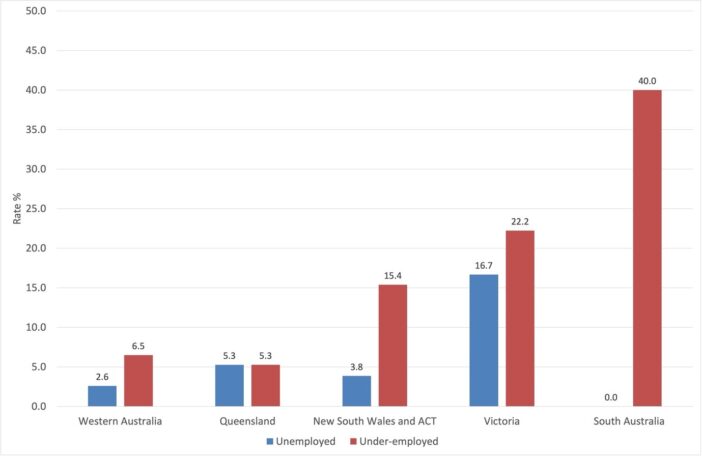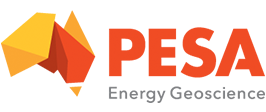Australia’s geoscientists benefitted from a sharp increase in employment opportunities in the final quarter of 2020 according to the latest AIG Australian geoscientist employment survey.
Unemployment amongst professional geoscientists (geologists, geophysicists and allied Earth scientists) recommenced a downward trend after improvement in employment prospects stalled throughout the previous three quarters of the year.
AIG President, Mr Andrew Waltho, welcomed the results. “It’s great to see job prospects for Australian geoscientists ending what had been a tentative 2020, on such a positive note,” he said.
Nationally, between the beginning of October and end of December 2020, geoscientist unemployment fell sharply from 10.6% to 4.5%, the fourth-lowest rate recorded since the survey series commenced in June 2009 and the lowest rate recorded since June 2012, at the height of the resources boom. Under-employment amongst self-employed geoscientists also fell in the final quarter of 2020, from 12.7% to 9.3%.

Employment improved across Australia. The greatest improvement was evident in Western Australia where unemployment fell from 8.0% to 2.6%. In Queensland, the unemployment rate fell from 9.4% to 5.3%, while a more modest fall was recorded in New South Wales, from 5.0% to 3.8%. Geoscientists working in Victoria continued to have the worst employment prospects, although unemployment fell from 24% to 15.4% at the end of the quarter. Only a small number of survey contributions were received from South Australia, Tasmania and the Northern Territory.

Mineral exploration delivered the bulk of new employment opportunities, with the proportion of geoscientists engaged in the field increasing from 61.5% to 69.2% during the quarter. Employment in minerals production also increased slightly from 14.6% to 15.3%. The proportion of geoscientists engaged in energy resource exploration and production decreased from 6.3% to 3.1% for the same period.
The proportions of geoscientists in different forms of employment (full-time, part-time, casual and self-employment) remained essentially unchanged.
The proportion of geoscientists seeking employment outside their profession fell from 9.1% in the third quarter of 2020 to 2.4% in the latest survey results, as geoscientists embraced better employment prospects.
Improved confidence was evident amongst unemployed respondents, with almost half of the unemployed and under-employed respondents feeling confident of returning to work within six months. Long-term unemployment, however, remains a concern with almost half of the unemployed respondents reporting having been without work for more than 12 months.
The vast majority of geoscientists in work at the end of December felt confident of retaining employment for the next 12 months. More than 9 in 10 geoscientists in employment reported that their conditions had been maintained or improved over the previous 12 months, since December 2019.
Gender diversity remained unchanged with women comprising only 14% of geoscientists employed in all sectors of industry, government, education and research across Australia. This figure has not moved significantly since the survey began collecting gender information in December 2017.
The survey received 337 responses, a strong response for the December quarter surveys.
“The latest quarterly survey revealed some very positive results,” Mr Waltho said. “An improvement in employment for geoscientists was expected during the fourth quarter of 2020 from discussions with colleagues and peers, but the magnitude of the improvement was a surprise,” he said. “The increased confidence evident in employment prospects is great to see, and although long term unemployment remains a feature of the geoscientist employment landscape, the number of geoscientists affected has decreased significantly for the first quarter in some time,” he said.
“The employment improvement appears to be largely due to increased mineral exploration,” Mr Waltho said. “I would expect that the Australian exploration expenditure statistics for the quarter will reveal increased exploration activity, especially in Western Australia and Queensland, when they are released by the Australian Bureau of Statistics,” he said. “Strong metals prices appear to be driving renewed investment in resource discovery, especially in commodities like gold, copper, nickel and other battery materials, even lithium where 2020 was not a good year for producers and investors,” he said.
“A major concern is that Australia’s geoscience community is aging,” Mr Waltho said. “Almost 40% of geoscientists in Australia have been working for more than 30 years, placing them in their mid-50s, while early career geoscientists: those with less than 10 years experience comprise less than 10% of the community” Mr Waltho said. “We are again looking at a situation where there are too few, appropriately educated and skilled students coming through Australian universities to meet future demand, as experienced geoscientists retire” he said. “This is a real concern, as a similar issue is evident in many developed countries including Canada, USA and across Europe, which raises real concerns as to how demand for geoscientific skills in all sectors of industry will be addressed” he said.
“We only have five to ten years to address this problem which is already front of mind for professional associations in Australia and overseas,” Mr Waltho said.




